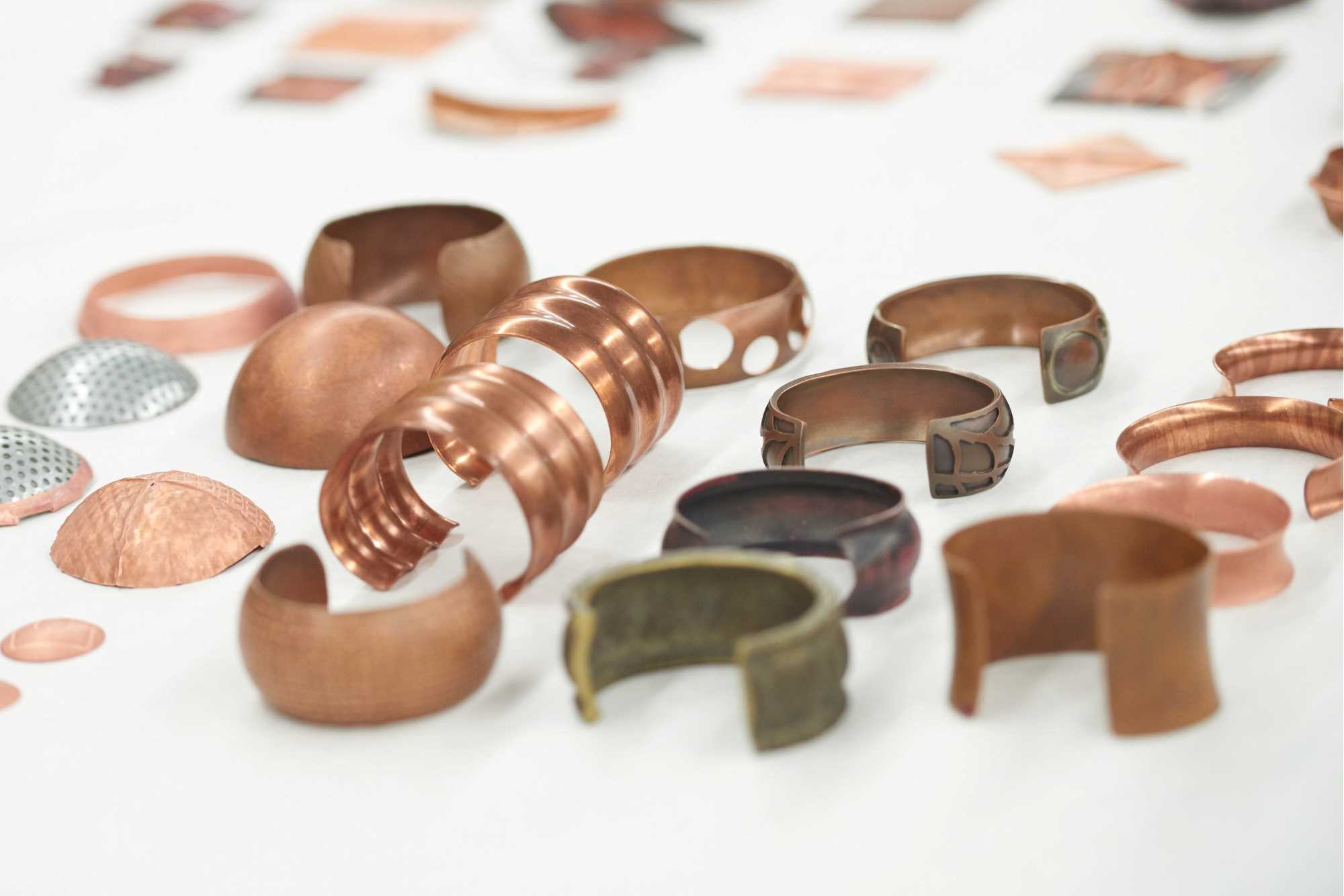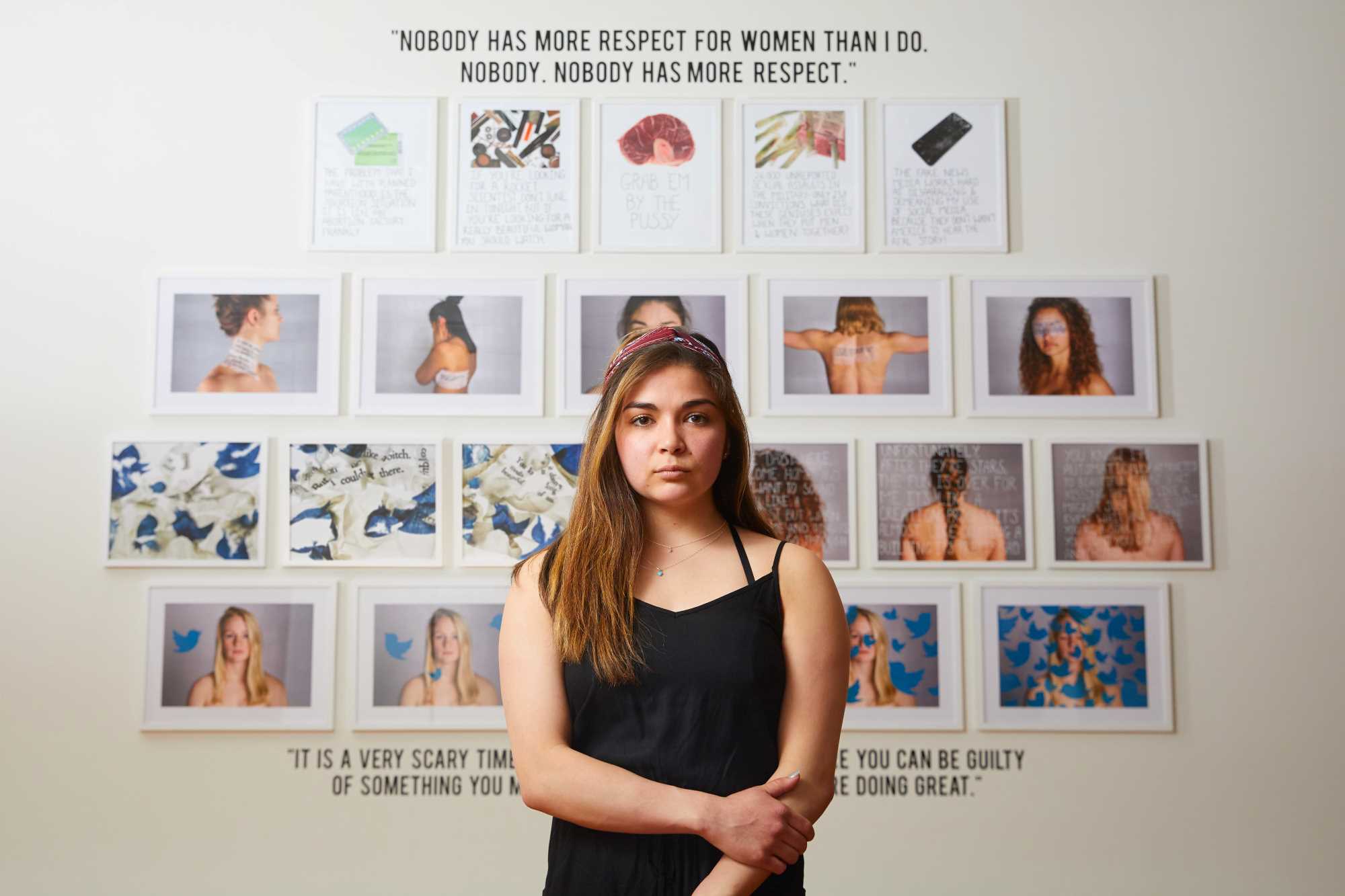Art program
Photography. Design. Sculptures. Paintings.
Art is all around us. Studying art leads to distinct career paths, depending on your specialization. A degree in art also builds skills such as creativity, persistence, problem solving and critical thinking, which are valuable in careers outside the field.
UWL's Art Department blends liberal studies education with small studio classes where students gain hands-on experience. The department offers a creative and educational environment that encourages intellectual development, visual literacy and artistic production. All art majors will gain professional experience installing their own senior exhibition and learn about the business of art in the professional practices course.
Art
Art involves using creativity, imagination and technical skills to invoke an emotion, communicate an idea or appeal esthetically. Studying art allows creative expression difficult to find in many traditional college courses. It helps students build skills and values such as analysis, synthesis, evaluation, critical judgment, tolerance of ambiguity, appreciation of diversity, aesthetic literacy and more.
Undergrad major Undergrad minor View a sample plan for Art Catalogfor Art Learn more for ArtEducation
Completion of the Art Education Program and associated benchmark assessments will lead to endorsement for a Wisconsin teaching license in Art Education for grades K-12.
Undergrad major Teacher license View a sample plan for Education Catalogfor EducationArt careers
Teaching: The need for certified/licensed K-12 art teachers continues to be in high demand. School districts consistently seek UWL graduates in art education due to the rigor of UWL's program. UWL offers an Art Education major for those interested in this path.
Business and industry: Graduates may seek employment in areas of business and industry such as visual arts, multimedia design, illustration, communications and public relations.
Create and sell: Opportunities also exist for artists to make all or part of their living through sales of their works. Advanced training and hard work are essential, but individual competence is of the utmost importance.
Earn an advanced degree: With an ongoing need for professors of art, the UWL Art Department encourages and aids capable art graduates in pursuing master of fine arts (M.F.A.) and doctoral degrees required for college teaching. Although the department does not offer a full-degree program in art history, it provides a sound foundation for students pursuing an advanced degree. College and university teaching, museum work, conservation and restoration of art objects, and consultant positions in government and industry are available to those with an advanced degree in art history.
Positions
- Art teacher (with teacher certification or at art institutes, colleges, or universities with an advanced degree)
- Craftsperson
- Freelance artist
- Digital artist/web designer/videographer
- Museum/gallery (various positions)
- Photographer
- Architect
- Art/architectural historian
- Arts administrator
- Art director/editor
- Ceramist
- Curator
- Gallery owner/director
- Digital designer
- Filmmaker
- Illustrator
- Interior designer
- Jeweler
- Jewelry designer
- Multimedia artist
- Metals researcher
- Museum educator
- Professional artist
- Conservation and restoration
- Technical artist
What distinguishes UWL's art program?
All students are encouraged to participate in various out-of-class experiences including department or faculty-led field trips to museums and galleries in Milwaukee, Madison, Chicago and Minneapolis; local, regional, and national art competitions in various studio areas; and undergraduate research designed for the student’s own interests and personal vision.
Art majors will gain professional experience installing their own senior exhibition and learn about the “business” of art in the Professional Practices course. Also, students are encouraged to apply for exhibition opportunities either in the La Crosse arts community or in other cities.
Our student-centered curriculum and low student-to-faculty ratio provide individualized mentorship and a rich sense of community. Art studios and classrooms offer students a dynamic creative environment for learning and feature a mix of new and traditional approaches to ceramics, digital art & design, drawing, metals, painting, photography, printmaking, sculpture, art education, and art history.
The University Art Gallery, located in the UWL Lowe Center for the Arts, schedules art exhibitions by students, faculty, and regional and nationally-known artists. In conjunction with the gallery program, the department hosts visiting artists to present lectures and workshops for students and the public.
Art students have the opportunity to gain professional experience working in the Department of Art as studio assistants, digital imaging specialists, gallery assistants, lab technicians, and administrative support.
Annually, the Department of Art gives promising art students scholarships and awards, including several specifically dedicated to incoming first-year art students.
- The School of Visual and Performing Arts (VPA) scholarships and awards
- All Student Juried Exhibition awards
- Work Study employment/assistantships in the Department of Art
- Undergraduate Research and Creativity Grants also support independent art projects, research and travel.
Art department faculty recognize the importance of international exposure to students of the arts. Students are encouraged to spend a semester, a full year, or a one-month summer opportunity studying abroad. The Art Department supports such programs for university credit in many parts of the world.
Students receive individualized support and mentoring from UWL Art Department faculty. Faculty have all earned the terminal degree in their discipline from well-recognized universities and strive to be excellent teachers, working artists and scholars. Faculty are active in exhibiting and publishing their own works internationally, nationally and regionally.
The Art Department encourages connections with a variety of professional associations: AIGA, the professional association for design; American Craft Council; Coalition of Active Sculpture Teachers; College Art Association; Foundations in Art: Theory and Education; Mid America Print Council; National Art Education Association; Phi Delta Kappa; SCG International; Society of North American Goldsmiths; Society for Photographic Education; and Wisconsin Art Education Association.


















